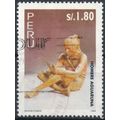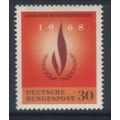Stockholm view from Town Hall Tower 1960s art card
- Condition : Used
- Dispatch : 2 Days
- Brand : None
- ID# : 47514896
- Quantity : 1 item
- Views : 155
- Location : United Kingdom

- Seller : justthebook (+1703)
- Barcode : None
- Start : Fri 08 Jul 2011 12:46:36 (BST)
- Close : Run Until Sold
- Remain : Run Until Sold
More Listings from This Seller view all
Seller's Description
- Postcard
- Picture / Image: Stockholm - Utsikt fran Stadhausets tarn - View from the Town Hall Tower
- Publisher: Nordisk Kunst
- Postally used: no
- Stamp: n/a
- Postmark(s): n/a
- Sent to: n/a
- Notes & Key words:
------------------------------------------------
Postage & Packing:
UK (incl. IOM, CI & BFPO): 99p
Europe: £1.60
Rest of world (inc. USA etc): £2.75
No additional charges for more than one postcard. You can buy as many postcards from me as you like and you will just pay the fee above once. (If buying postcards with other things such as books, please contact or wait for invoice before paying).
Payment Methods:
UK - PayPal, Cheque (from UK bank) or postal order
Outside UK: PayPal or Google Checkout ONLY please. NO non-UK currency checks or money orders (sorry).
NOTE: All postcards are sent in brand new stiffened envelopes which I have bought for the task. These are specially made to protect postcards and you may be able to re-use them. In addition there are other costs to sending so the above charge is not just for the stamp!
----------------------------------------------
Text from the free encyclopedia WIKIPEDIA may appear below to give a little background information:
*************
Stockholm City Hall (Swedish: Stockholms stadshus or Stadshuset locally) is the building of the Municipal Council for the City of Stockholm in Sweden. It stands on the eastern tip of Kungsholmen island, next to Riddarfjärden's northern shore and facing the islands of Riddarholmen and Södermalm. It houses offices and conference rooms as well as ceremonial halls, and the luxury restaurant Stadshuskällaren. It is the venue of the Nobel Prize banquet and one of Stockholm's major tourist attractions.
In 1907 the city council decided to build a new city hall at the former site of Eldkvarn. An architectural contest was held which in a first stage resulted in the selection of drafts by Ragnar Östberg, Carl Westman, Ivar Tengbom jointly with Ernst Torulf, and Carl Bergsten. After a further competition between Westman and Östberg the latter was assigned to the construction of the City Hall, while the former was asked to construct Stockholm Court House. Östberg modified his original draft using elements of Westman's project, including the tower. During the construction period, Östberg constantly reworked his plans, resulting e.g. in the addition of the lantern on top of the tower, and the abandonment of the blue glazed tiles for the Blue Hall.
Oskar Asker was employed as construction leader and Paul Toll, of construction company Kreuger & Toll, designed the foundations. The construction took twelve years, from 1911 to 1923. Nearly eight million red bricks were used. The dark red bricks, called "munktegel" (monks's brick) because of their traditional use in the construction of monasteries and churches, were provided by Lina brick factory near Södertälje. Construction was carried out by craftsmen using traditional techniques.
The building was inaugurated on 23 June 1923, exactly 400 years after Gustav Vasa's arrival in Stockholm. Verner von Heidenstam and Hjalmar Branting held the inaugurational speeches.
The site, adjacent to Stadshusbron, being bordered by the streets of Hantverkargatan and Norr Mälarstrand to the north and west, and the shore of Riddarfjärden to the south and east, allowed for a spacious layout. The building follows a roughly rectangular ground plan. It is built around two open spaces, a piazza called Borgargården on the eastern side, and the Blue Hall (Blå hallen) to the west.
The Blue Hall, with its straight walls and arcades, incorporates elements of a representative courtyard.[1] Its walls are in fact without blue decorations, but it has kept its name after Östbergs original design. It is known as the dining hall used for the banquet held after the annual Nobel Prize award ceremony. The organ in the Blue Hall is with its 10,270 pipes the largest in Scandinavia. Above the Blue Hall lies the Golden Hall (Gyllene Salen), named after the decorative mosaics made of more than 18 million tiles. The mosaics make use of motifs from Swedish history. They were executed by the Berlin, Germany, firm of Puhl & Wagner Gottfried Heinersdorff, after nine years of negotiations by Gottfried Heinersdorff for the commission.
The southeast corner of the building, immediately adjacent to the shore, is marked by a monumental tower crowned by the Three Crowns, an old national symbol for Sweden. The tower is 106 metres high and is accessible by an elevator or by a stair of 365 steps. The eastern side of its base is decorated with a faux tomb and gold-plated sarcophagus of Birger Jarl.
Stadshuset is considered one of Sweden's foremost examples of national romanticism in architecture. The unique site, overlooking Riddarfjärden, inspired a central motif of the construction, namely, the juxtaposition of city architecture and water that also represents a central feature of Stockholm's cityscape as a whole. The architectural style is one of refined eclecticism, blending massive, austere, North European brick construction and playful elements reminiscent of oriental and venetian architecture, such as turrets adorned with golden starlets, decorated balconies, wooden masts, and statues.
Listing Information
| Listing Type | Gallery Listing |
| Listing ID# | 47514896 |
| Start Time | Fri 08 Jul 2011 12:46:36 (BST) |
| Close Time | Run Until Sold |
| Starting Bid | Fixed Price (no bidding) |
| Item Condition | Used |
| Bids | 0 |
| Views | 155 |
| Dispatch Time | 2 Days |
| Quantity | 1 |
| Location | United Kingdom |
| Auto Extend | No |



 for 1 item(s)
for 1 item(s)















